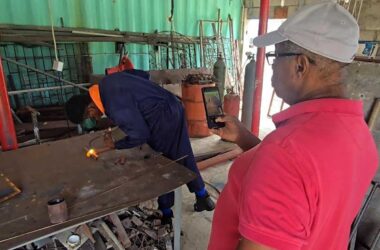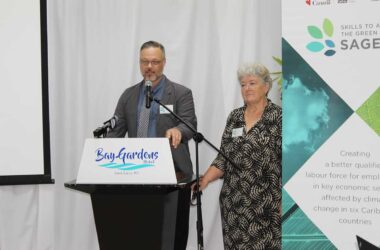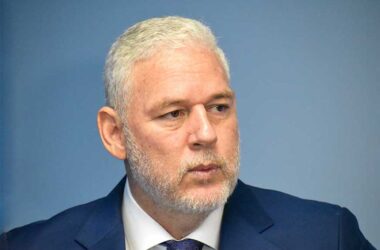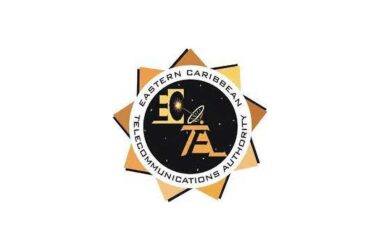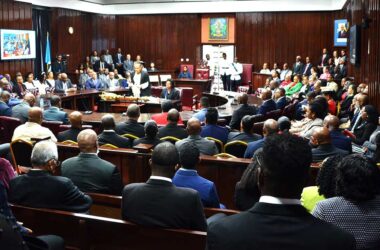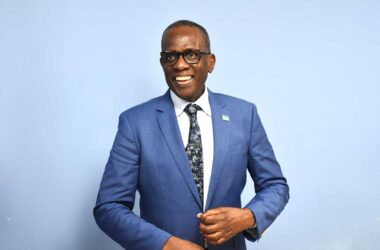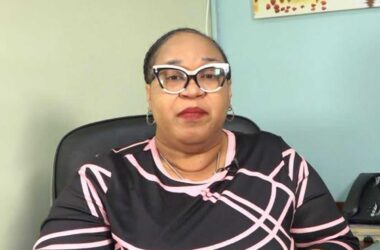The Caribbean is just one natural disaster away from catastrophe, and the region’s current financing model is failing to keep pace with escalating climate risks. This, according to Jwala Rambarran, Senior Policy Advisor at the Caribbean Policy Development Centre (CPDC) needs urgent attention.
Rambarran was speaking at a recent debt consultation in St. Vincent & the Grenadines in February. While presenting findings from his study, “How Can the World Bank Better Support Natural Disaster Risk Financing in Caribbean SIDS?” he highlighted the urgent need for more effective financial instruments with pre-arranged emergency liquidity after natural disasters. This he says will help Caribbean small island developing states (SIDS) without pushing them further into debt.
Rambarran’s study comes at a critical moment, with Hurricane Beryl serving as a stark reminder of the economic devastation that climate disasters have on the Caribbean.
“Caribbean governments need access to guaranteed, pre-arranged financing solutions to meet large and increasing post-disaster relief and recovery efforts,” he explained.
His study recognizes the World Bank’s efforts in helping Caribbean governments integrate disaster risk management into their national development plans. However, he argues that more needs to be done, particularly in ensuring the availability of financial protection that matches the scale of current and future disaster risks.
“Caribbean governments should learn from the experience with Hurricane Beryl, which caused economic losses as high as 22% of GDP in St. Vincent and the Grenadines,” he said. “They need to ensure that more pre-arranged financial protection mechanisms are in place. In this respect, the World Bank needs to significantly improve the rollout of its Crisis Preparedness and Response Toolkit in the Caribbean region.”
One of the most concerning trends in the study is the inconsistent availability and effectiveness of existing financial instruments. Grenada became the first country in the world to trigger a natural disaster clause, temporarily deferring debt service payments. In contrast, St. Vincent and the Grenadines did not renew its World Bank Catastrophe Deferred Drawdown Option (CAT DDO), a facility that had been crucial in funding the country’s emergency response to the 2021 volcanic eruption. As a result, when Hurricane Beryl struck, the country was left without a similar financing mechanism.
Likewise, Jamaica suffered damage amounting to just over 1% of GDP along its southwestern coast but did not receive a payout from its World Bank-sponsored catastrophe bond. Instead, the government had to rely on its own limited fiscal resources to fund emergency response and recovery.
Rambarran emphasized that while the World Bank has shifted from post-disaster response toward pre-disaster risk reduction, its financing tools still fall short in addressing the unique vulnerabilities of Caribbean nations.
“G20 leaders have called for reforms to make multilateral development banks, including the World Bank, more effective,” he noted. “Yet, as the largest provider of development finance to the Caribbean, the World Bank still has a long way to go in supporting small island nations facing repeated climate disasters.”
A major flaw in the global financial system, according to Rambarran, is its reliance on gross national income (GNI) per capita to determine eligibility for aid and concessional financing. This classification often labels Caribbean SIDS as middle- to high-income countries, overlooking their extreme vulnerability to climate-related disasters.
“The World Bank needs to supplement its GNI per capita measure with a multidimensional vulnerability index that better captures the economic, social, and environmental risks faced by Caribbean nations,” he argued.
To address these issues, Rambarran’s study proposes several key recommendations. He calls on the World Bank to develop a regional loss and damage data hub, use its influence to encourage greater uptake of catastrophe risk financing solutions and launch a communications campaign to help Caribbean governments better understand financing tools such as catastrophe bonds and CAT DDOs.
He also suggests that the World Bank should strengthen the Caribbean Catastrophe Risk Insurance Facility (CCRIF) by partnering with the Global Shield against Climate Risks. Additionally, applying the disaster risk financing framework to adaptive social protection programs could ensure that Caribbean populations most vulnerable to disasters receive timely financial assistance.
With another hurricane season fast approaching, Rambarran warns that action must be swift.
“Time is of the essence. We are just one hurricane away from losing a decade of development,” he warned. “Caribbean decision-makers need to move with speed, partnering with the World Bank to implement practical solutions. CPDC stands ready to support this regional effort, ensuring that the voice of Caribbean civil society is heard at the table.”
His study, presented under the Funders Organized for Rights in the Global Economy (FORGE) II, the Open Society Foundations (OSF) and the Center for Global Development (CGD) projects, is part of a broader initiative to mobilise civil society organizations in advocating for sovereign debt relief and climate justice. Supported by Debt Justice (formerly Jubilee UK), CPDC continues to collaborate with civil society groups across the region, ensuring that the Caribbean’s urgent need for sustainable disaster financing remains a priority on the global stage.




